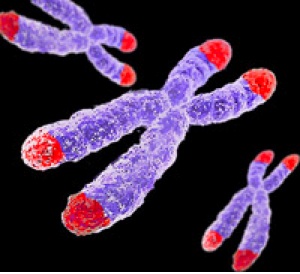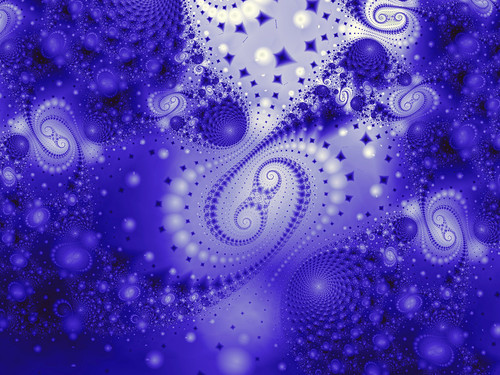

|
Audio Internet in New Delhi Empowerment and connection for people who can’t afford a computer, and many of whom can’t read: Nearly 300 million people now use cellphones in India, up from zero a little more than a decade ago... ‘We asked ourselves: how can we enable this vast population to do things on the phone in a manner that does not assume a PC-based internet?’... ‘While a farmer may not be able to write a memo, or an email, or a summary of his work, he can easily talk about it...this led to the “Spoken Web.”’ Conceptually, the spoken web is a network of VoiceSites, just as the internet is a network of websites. A VoiceSite can only be accessed by a phone, and only requires the user to be able to speak and listen. Callers can create their own VoiceSites or access those of others. They can also surf the spoken web, jumping from VoiceSite to VoiceSite using speech. |
1 November 2008
|
||
|
Benediction deconstructed Classical modes of prayer entail gestures of surrender and
supplication. We place the locus of power outside ourselves. Usually we
formulate a wish, while renouncing any aspiration to assertion of
the will; but sometimes even the wish itself is hedged, as in ‘if it be thy
will, O Lord,...’ May you blossom into the fullness of your vitality. — Josh Mitteldorf |
2 November 2008
|
||
|
Journey to the Interior As a blind man, lifting a curtain, knows it is morning, |
3 November 2008
|
||
|
¡El pueblo unido jamás será vencido! “It doesn’t matter who’s sitting in the White House. What matters is who’s protesting on the streets outside the White House.” “Political participation does not come to an end when the election results are announced. In many ways, this is just the beginning. Informed and responsible citizens engage their political representatives in ongoing public dialogue on pressing social issues. This is a sign of a healthy community, for which all its citizens should be striving and insisting.” — Federal Elections Guide 2008, by the Canadian Conference of Catholic Bishops |
4 November 2008
|
||
|
The Law When the great universe was wrought That force is thine. Though desolate — Ella Wheeler Wilcox, born this day in 1850 |
5 November 2008
|
||
|
Why is a raven like a writing desk? Using Chinese characters to transcribe Korean speech had never been a good fit. Emperor Sejong the Great (1397–1450) wanted peasants to have a shot at literacy. Brilliantly concise and intuitive, the modern Korean alphabet was his invention. 14 consonants + 10 vowels are arranged in clusters of 2 or 3 to form syllables that remind you a bit of the Chinese characters that were the standard up until the 15th century. Sejong’s palace scholar, Choi Manli, opposed the innovation: Since the new alphabet is so easily understood, I fear that the people will fall into laziness and never make efforts to learn. Those who do not use Chinese characters but other letters and alphabets, such as Mongols, Sohans, Jurchens, Japanese and Tibetans, are all barbarians without exception. To use new letters would make us barbarians ourselves. Why does Your Highness seek to alter a language that has been used since early antiquity and has no ill effects, and place alongside it a set of coarse and vulgar characters of no worth at all? Is not this script, moreover, a mere transcription of the words spoken by the peasants, without the slightest resemblance to the original Chinese characters? Over time, the best ideas always prevail. In this case, it took less than 500 years for Choi’s wisdom to be finally abandoned in favor of practical advantage. American Scientist article by Howard Wainer on convention and innovation |
6 November 2008
|
||
|
Perhaps we do God a favor by not believing in him «Qu’est-ce que le bonheur sinon l’accord vrai entre un homme et l’existence qu’il mène?» ‘What is happiness, if not a simple harmony between a man’s nature and the life he leads?’ — Albert Camus, born this day in 1913 «Peut-être vaut-il mieux pour Dieu qu’on ne croit pas en lui.» |
7 November 2008
|
||
|
“We have all known the long loneliness and we have learned that the only solution is love and that love comes with community.” Dorothy Day, born this day in 1897, built community out of the hardship of the Great Depression. She was able to harness resources of the Catholic church to create houses of shelter and, when people were attracted from fear or destitution, to turn them into a supportive community of help for one another. Day recognized early the moral imperative to reach across the ocean and support European Jews who were being expelled and exterminated. She founded the Committee of Catholics to Fight Anti-Semitism. Later, she decried the insanity of the nuclear arms race, and raised her voice protesting the air raid drills of the Cold War. “In the name of Jesus, who is God, who is Love, we will not obey this order to pretend, to evacuate, to hide. We will not be drilled into fear. We do not have faith in God if we depend upon the Atom Bomb.” |
8 November 2008 
|
||
|
We all know people who have lived with cancer, or have had a similarly profound brush with death. Afterward, the world appears to them in brighter colors. Appreciation is enhanced. Engagement is more genuine. They may continue to choose the same mix of ‘productive’ activities, rest and leisure, but they no longer experience it as procrastination. The Dalai Lama visualizes his own death in a daily meditation practice. You don’t have to look death square in the face before you can live moment to moment in awe of nature’s beauty – but it helps. — Josh Mitteldorf |
9 November 2008
|
||
|
Extending chromosomes - extending life span - can it be this easy? Aging at the cellular level is controlled by telomeres, tails of repetitive DNA on the ends of our chromosomes that get shorter each time the cell divides. There is intriguing evidence that this has a lot to do with human aging: People with longer telomeres have longer life expectancies. People with shorter telomeres are at higher risk for heart disease and cancer. Technology for extending our telomeres is in the lab, and the first offerings (high price, limited effectiveness) are already commercially available. Better and cheaper treatments should arrive within a few years. Our stem cells are the source of new blood cells and skin cells that we are constantly replacing. Stem cells also can regenerate damaged tissues, as in arteries and the heart, and can even grow neurons to keep our brains young. Stem cells slow down when their telomeres get short. Labs around the world are working to turn your ordinary skin cells (back) into stem cells so they can replenish us. This promises to be easier and cheaper than extracting stem cells from embryos, and it doesn’t raise the hackles of the Christian right. Article and interview with Michael West in Life Extension Magazine |
10 November 2008
|
||
|
“Man has such a predilection for systems and abstract deductions that he is ready to distort the truth intentionally, he is ready to deny the evidence of his senses only to justify his logic.” — Fyodor Dostoyevsky, born this day in 1821 |
11 November 2008
|
||
|
“Hope is the hardest love we carry.”
“...desire is fathomless and ultimately unfillable.” |
12 November 2008 |
||
|
You shall meet no monsters, except those you carry in your soul When setting out upon your way to Ithaca, |
13 November 2008
|
||
|
Mystery, Miracle and Magic Miracle... is exactly the opposite of magic. Miracle involves openness to mystery, the welcoming of surprise, the acceptance of those realities over which we have no control. Magic is the attempt to be in control, to manage everything—it is the claim to be, or to have a special relationship with, some kind of ‘god.’ Spirituality is aligned not with magic and the effort to control, but with miracle, ‘the wonder of the unique that points us back to the everyday.’ We do not create miracles, we witness them. In witnessing them, we
must acknowledge that they exist. In acknowledging that they exist, we
must admit that we do not know ‘why’ or ‘how.’ Somehow above and beyond
human reason, miracle, like mystery, is inexplicable, unsolvable,
incomprehensible.
That doesn’t mean that our prayers have no effect, or that we may have no active agency with regard to the Mystery.
It does, however, counsel humility. |
14 November 2008
|
||
|
RNA interference The central dogma of biochemistry says that a gene is transcribed from DNA into messenger RNA, and the strand of messenger RNA travels to a ribosome where it is translated into a protein. DNA is double-stranded; RNA is single-stranded. Just a decade ago, biochemists learned to engineer strands of RNA that are the perfect complements to some particular messenger RNA, encoding a particular protein. This strand has such a tremendous affinity for its complementary sister that it will find it in the cell and bind to it, forming a double-stranded RNA. Thus it ties up the messenger RNA and derails it from its mission. This process is called RNA interference, or RNAi. With it, we can turn off any gene with a tiny quantity of a substance that has no side-effects. So far, RNAi has been used in lab experiments to learn about the effects of particular genes. But potential medical applications beckon. Most promising are to fight viral infections by turning off their genes, and to disable certain cancers. |
15 November 2008
|
||
|
Drowning in pleasure For most of us in an opulent society, potential sources of external
pleasure are abundant. Our pleasure is limited not by the availability
of thrilling entertainment or fine food, but by our capacity to take it
all in. We have bathed ourselves in sensory stimulus in order to drown
out the plaintive songs of our deprived and disempowered souls. We have
numbed ourselves with an overdose of pleasures. |
16 November 2008
|
||
|
|
17 November 2008
|
||
|
American Summerhill American education has moved inexorably toward more standardization, more ‘accountability’, meaning more testing and less local control of the curriculum. Meanwhile a small, thriving school in the Boston suburbs has operated for over 40 years with no tests at all and a curriculum chosen moment to moment by the students themselves. The Sudbury Valley School is a free and democratic community, where students can choose to spend their time playing football or playing video games or studying algebra. The result of this radical experiment is that they all come out knowing how to read and write and figure, that their basic knowledge of the world is far superior to that of most students who graduate from American public schools. Mixed age groups are an essential ingredient. Students learn from each other more than they learn from their teachers. Faculty are pulled in as resources when the students so choose. ‘Democracy’ extends to all. Hiring and firing decisions are made by community meetings, in which every faculty member and every pre-schooler has an equal vote. School rules are decided in the same way. Everything follows from freedom and democracy. Adults attend to process, preserving the community and its values, while motivation to take on projects and to learn and to mature come from community interactions. The Sudbury model has been replicated in dozens of independent schools across the country and beyond. Admission is open, and costs are not high. |
18 November 2008
|
||
|
Fuzzy logic ‘In my head are many facts of which I wish I was more certain I was sure.’ Listen to Yul Brynner sing Puzzlement from The King and I |
19 November 2008
|
||
|
‘Cutting through our sophistries’
It will show you the pain beyond naming and the love beyond love, and show you that you already know these things — and feel them, and are made of them — no matter what you think. |
20 November 2008
Matthias Grünewald |
||
|
Using a computer for a telescope A radio telescope dish has the same parabolic shape as a telescope mirror because they both do the same thing: they sort out the radiation that comes into them by direction from which it came, so that putting a detector (or a piece of film) in a particular place within the dish records the radiation that came from one point in the sky. A spectrometer and a radio tuner do the same job: they sort out radiation by frequency (same as color, or wavelength) and filter out everything outside a small band, so it can be separately detected. Both these filters make sense of the radiation coming from the sky, but they do so by throwing away almost everything, making it possible to measure one frequency and one object at a time. Max Tegmark (now at MIT Physics Dept) is one of the most fertile and creative minds of our generation. He has contributed crazy and wonderful ideas about fundamental physics and cosmology. His latest big idea is not about theory but measurement. With enough computer power, he tells us, we won’t need telescopes or spectrometers to study the astronomy. He wants to build a square mile of simple detectors that measure the incoming radiation from all directions and all frequencies at once. Then let a computer do the sorting for us and Bingo! we have a high-resolution picture of the entire sky, at all frequencies. The detectors are much cheaper than telescopes. The main expense is the computation, and that cost is dropping rapidly. There is a precedent in aperture synthesis radio telescopes, and Tegmark has built a prototype on a rooftop at MIT. Article
from New Scientist |
21 November 2008
|
||
|
I am in need of music There is a magic made by melody: Today we celebrate the feast day of St Cecilia, patron saint of music. |
22 November 2008
Melozzo da Forli c 1480 |
||
|
Science and wishful thinking We want to believe that we are souls, not wholly identified with
bodies. We know our bodies are destined to die. It would be
comforting to believe that we are more than our bodies, and that there
is the potential for a continued presence beyond death. |
23 November 2008 Photo by |
||
|
Mobile solar energy panels This green plant is an animal. The Sea Slug has a transparent body, and hosts a colony of algae that grows food right there inside, so it doesn’t have to bother eating to get its daily dose of nutrition. This deep symbiosis has been going on long enough that some of the genes from the algae have transferred over into the slug. The slug produces some of the proteins that are essential to the algae, so that the algae have become dependent on their host (who is also their predator!) to perform photosynthesis. ‘This movement of genes is called horizontal gene transfer. It’s common among bacteria, which swap genes for antibiotic resistance and such. It’s not as common among multicellular creatures, but it has happened a number of times.’ |
24 November 2008
|
||
|
“We’ve begun to raise daughters more like sons... but few have the courage to raise our sons more like our daughters.” — Gloria Steinem, born this day in 1935 |
25 November 2008
|
||
|
Koan and paradox in the existential tradition «Plonge dans l’étonnement et la stupéfaction sans limites, ainsi tu peux être sans limites, ainsi tu peux être infiniment.» “Immerse yourself in limitless astonishment and bewilderment; thus will you defy limits; thus will you become infinite.” — Eugene Ionesco, born this day in 1909 |
26 November 2008
|
||
|
Count your blessings. If you finish early, count your curses as blessings. Marcel Proust’s reminder to be grateful for loving connection is frequently cited: «Soyons reconnaissants aux personnes qui nous donnent du bonheur, elles sont les charmants jardiniers par qui nos âmes sont fleuries.» “Let us be grateful to people who make us happy, they are the charming gardeners who make our souls blossom.” Less commonly do we read the sentence that follows: «Mais soyons plus reconnaissants aux femmes méchantes ou seulement indifférentes, aux amis cruels qui nous ont causé du chagrin.» “But we should be more grateful for women who are wicked or merely aloof, for cruel friends that cause us pain.” |
27 November 2008
|
||
|
Copernicus revisited: Maybe we’re special after all. Fifty years ago, Big Bang Cosmology was just a vague idea, without sufficient connection to real observations to call it a theory. But better telescopes and computer analysis has since enabled astronomers to map out the universe on a large scale. The result agrees with the main broad-brush picture of the Big Bang, but the details are puzzling. The large scale dynamics — the distribution of matter and its motion — can only be made consistent with theory if two new forms of matter are hypothesized. The problem in particular is the accelerating expansion of the Universe. Dark Energy and Dark Matter must have gravitational properties tailor-made for cosmology, with additional features to explain why we’ve never observed them on earth or in cosmic rays or in any smaller-scale astronomical system. Some physicists are saying that the invention of two new forms of matter is too high a price for any theory to pay. They propose a different solution. One of the auxiliary assumptions that goes into construction of the Big Bang cosmology is that we are in a typical place in the Universe, with nothing special about it. Viewed from any other location, the large-scale structure would look just about the same as the way it looks from here. Suppose the place we live isn’t typical. Suppose we live in a part of the universe that has less matter than surrounding parts. Then our local bubble would have lower gravity, and it would expand into the surrounding high-density region at an accelerating rate. Maybe it’s more plausible that we happen to be in a special place than that there are two hitherto-unknown forms of matter-energy. But why should we find ourselves in a special place?
New Scientist blog by Amanda Geftner last summer |
28 November 2008
|
||
|
So much for trusting your instincts... ‘Common sense is simply the residue of prejudice and misconceptions that have
accumulated over centuries of ignorance and have yet to be clarified and
corrected by scientific progress.’ ‘Common sense is the residue of those prejudices that were instilled into us before the age of seventeen.’ |
29 November 2008
|
||
|
Intractible Friday we looked at the possibility that we live in a spherical hole in an infinite universe. Seems pretty arbitrary, doesn’t it? It made me wonder what the universe would look like if there were holes of random sizes all over — a universe full of inhomogeneities, great and small. Doesn’t that seem more plausible than finding ourselves at the exact center of a single spherical hole? The random, inhomogeneous universe is not a valid scientific theory (in today’s culture) for just one reason: no one knows how to calculate its properties. When Einstein came up with his theory of gravity in 1917 (often called the General Theory of Relativity), it was far more complex than other physical theories to date. From the four dimensions of space-time, GR constructs 64 variables at every point in space and time, linked by 64 differential equations (calculus equations) for every point. Alexander Friedmann (1922) proposed a model of the universe that vastly simplified Einstein's field equations. He introduced the assumption that the universe is the same at every point in space — perfectly homogeneous. All directions are then equivalent (‘isotropy’), so instead of 64 linked equations he had exactly one equation. The equation was so simple that it could be solved — a rare and wonderful thing. Ever since then, cosmologists have assumed that the universe is homogeneous and isotropic. Friedmann assumed that stars were distributed uniformly through space. Then, just a few years later, galaxies were discovered. So the reigning religion was that galaxies were distributed uniformly. When galaxy clustering was detected, the same theory was assumed to apply to clusters of galaxies randomly (uniformly) distributed through space. Today we know that there are clusters of clusters of galaxies up to the largest scales we can map. And still, the Friedmann model is the one we use. We use it because it leads to equations we can solve, not because it agrees with observation. Even with 21st Century supercomputers, the full 64-variable version of Einstein’s theory remains light years beyond our ability to calculate. We construct theories based on equations we can solve. This constitutes a bias in many fields of science (e.g., population genetics, quantum mechanics). In chemistry, Erwin Schroedinger solved the equation of the hydrogen atom (1 electron) in 1925, but the cases of the helium atom and the hydrogen molecule (2 electrons each) are so fabulously complex that they have been solved only recently, using modern computational techniques. The 3 electron problem remains far beyond reach. Scientists aren’t so dumb. Most are well aware that they are looking for their keys under the lamppost, especially if you pin them down to address the issue explicitly. But still the theories we construct are the tractible ones, and our attachment to these theories forms an unconscious bias that pervades scientific understanding. The tendency to impose formal order on phenomenological chaos, to imagine that we understand more than we really do and that our equations have wider application than we can rigorously justify — this mental habit remains a broad scientific bias. The truth is that even when we understand all the parts of a system and have clear rules about how they relate and respond to one another, properties of the system as a whole remain elusive. Is this a fundamental limitation of science, or is it a pointer in the direction of a new kind of science to come? — Josh Mitteldorf |
30 November 2008
|





























